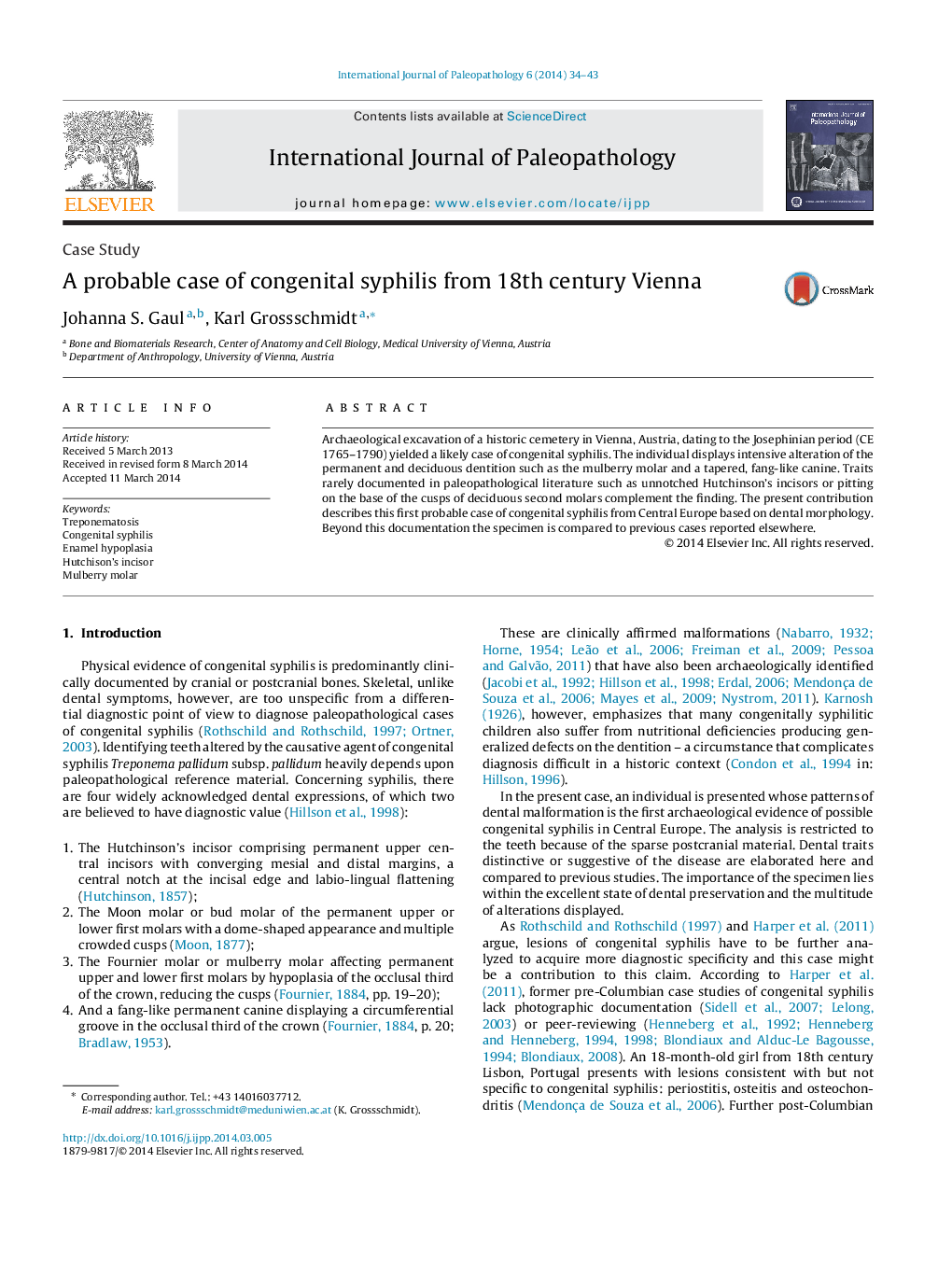| کد مقاله | کد نشریه | سال انتشار | مقاله انگلیسی | نسخه تمام متن |
|---|---|---|---|---|
| 101342 | 1422385 | 2014 | 10 صفحه PDF | دانلود رایگان |
• First archaeological evidence of a case of probable congenital syphilis from Austria.
• Enamel defects on deciduous and permanent dentition.
• Contribution to variable forms of dental expression in case of congenital syphilis.
• Known stigmata as well as traits rarely recorded.
• Documentation of dental defects on the deciduous dentition postulated by Karnosh (1926) from clinical practice.
Archaeological excavation of a historic cemetery in Vienna, Austria, dating to the Josephinian period (CE 1765–1790) yielded a likely case of congenital syphilis. The individual displays intensive alteration of the permanent and deciduous dentition such as the mulberry molar and a tapered, fang-like canine. Traits rarely documented in paleopathological literature such as unnotched Hutchinson's incisors or pitting on the base of the cusps of deciduous second molars complement the finding. The present contribution describes this first probable case of congenital syphilis from Central Europe based on dental morphology. Beyond this documentation the specimen is compared to previous cases reported elsewhere.
Journal: International Journal of Paleopathology - Volume 6, September 2014, Pages 34–43
